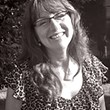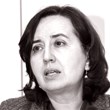Program and slides
Day 1, Tuesday April 9
08.00 - 09.00 Plenary session
Introduction for beginners (outside of the conference)
If you feel the Accessibility Days are a bit too advanced, we offer a short run through of the basics of accessibility just before the event starts. This introduction to web accessibility in 60 minutes is your opportunity to learn the most important things – very fast!
Price: 160 EUROS per person.

Erik Börjesson is one of Funka’s trainers and project managers. He’s skilled in conveying accessibility knowledge on different levels and is happy to be on stage. Erik is a Certified Professional in Accessibility Core Competencies (CPACC). When Erik isn’t supporting our clients with accessibility, he’s nurturing a career in stand-up.
08.30 - 09.30
Welcome to register and have a cup of coffee before the conference
09.30 - 09.40 Plenary session
Conference opening by moderators
The moderators of Funka Accessibility Days present themselves and introduce the conference.

Main moderator
Jay Cardinali, CPACC, has more than 30 years of experience within Walt Disney Parks and Resorts, most recently as Worldwide Accessibility Manager. For nearly twenty five years, he has provided accessibility support for the Company’s iconic travel and leisure businesses which include six world class destinations in the U.S., Europe, and Asia; Disney Cruise Line; Disney Vacation Club; and Adventures by Disney. He is also the current Chair of the Global Leadership Council for the International Association of Accessibility Professionals (IAAP). Jay is a resolute believer that accessibility is a fundamental component of great guest service and is always willing to share knowledge, best practices, and benchmarking opportunities.

Moderator of the technology track
Sandra Eriksson is an accessibility expert at Funka, specialising in interpretation of requirements and testing with different kinds of assistive technology. She provides support and recommendations in various types of assignments and helps our clients to make the right priorities. Sandra is a Certified Professional in Web Accessibility (CPWA).
09.40 - 10.10 Plenary session
The European Commission on the Web Accessibility Directive
This September, the first public sector websites need to comply with the European Web Accessibility Directive. In this session we will learn about the current situation when it comes to enforcement and monitoring of the directive throughout all member states.

Gudrun Stock is Deputy Head of Unit Accessibility, Multilingualism and Safer Internet, DG CONNECT, at the European Commission.
The presentation is held in English and simultaneously interpreted into Swedish, sign language and captioned.
Gudrun Stock, presentation, powerpoint (0,5 Mb), opens in new window
10.10 - 10.40 Plenary session
European Accessibility Act – for the Private Sector
This session covers the current status of the European Accessibility Act and its implications on business as well as technology. The exact date for when the accessibility legislation covering sectors like banks, e-commerce and e-books enters into force is decided this April. This presentation is guaranteed to include the latest news from the European Commission about the topic.

Inmaculada Placencia Porrero is a Senior Expert on Social Affairs, Disability and Inclusion Unit, DG Employment, Social Affairs and Inclusion, European Commission, Brussels. She has been leading the EU work on accessibility legislation for more than 15 years.
The presentation is held in English and simultaneously interpreted into Swedish, sign language and captioned.
Inmaculada Placencia Porrero, presentation, powerpoint (266 kb), opens in new window
10.40 - 11.00 Plenary session
Latest update from Sweden: DIGG responsible for monitoring and support
The relatively new agency for digital administration, DIGG, is going to be a hub for digitalisation of the public sector. This means facilitating as well as monitoring. This presentation covers the upcoming assignment to facilitate and monitor the enforcement of the national law enacting the Web Accessibility Directive, called Law on Accessibility, to digital public service.

Tommy Olsson has been an accessibility evangelist for 15 years at the Swedish Company Registration Office and now specializes on web accessibility with DIGG.
The presentation is held in Swedish and simultaneously interpreted into English, sign language and captioned.
Tommy Olsson, presentation in Swedish, powerpoint (14,3 Mb), opens in new window
11.00 - 11.30 Plenary session
How to comply with the new legislation
The member states of the European Union have enacted the Web Accessibility DIrective in slightly different ways, some going beyond the minimum requirements, some extending the scope. But for the individual website owner or IT-supplier, the challenges are very similar. How do you make sure something is accessible? What is good enough? How do you prioritise? What is most important for the end users? This presentation gives solid advice and practical examples on how to use the directive as a tool.

Susanna Laurin is Chief Research and Innovation Officer of Funka and an accessibility expert. She has led the WADex expert groups to the European Commission and she is a technical expert in several standardisation committees. Among other things, she is a technical expert in the ETSI Special Task Force which, on assignment from the European Commission, is developing the minimum requirements of the Web Accessibility Directive in the EN 301549. Susanna represents the International Association of Accessibility Professionals, IAAP, to the European Union; she is Vice President of the IAAP Global Leadership Council and leads the IAAP Nordic chapter. Susanna is a Certified Professional in Accessibility Core Competencies (CPACC).
The presentation is held in Swedish and simultaneously interpreted into English, sign language and captioned.
Susanna Laurin, presentation in Swedish, powerpoint (6,94 Mb), opens in new window
11.30 - 12.30
Lunch
12.30 - 13.10 Track 1
Demystifying Mobile: Designing with Accessibility in Mind
This presentation will explore the user experience mobile design principles noting how it can help and in some cases make it more challenging for people with disabilities, using practical examples to illustrate both good and challenging designs for mobile. Participants will learn what challenges people with disabilities face using mobile devices and how to balance the design needs for all users.

Kathy Wahlbin is Vice President of Enterprise Compliance for Vispero and is General Manager for The Paciello Group and Interactive Accessibility. Kathy has worked with hundreds of clients around the world since 2001 to help make digital products accessible to people with disabilities. As an invited expert of the W3C WCAG Working Group, she contributes to the development of new accessibility standards, guidelines, techniques and methodologies. Kathy led the W3C Mobile Accessibility taskforce which defined the accessibility requirements for small screen devices and touch interfaces in WCAG 2.1.
The presentation is held in English and simultaneously interpreted into Swedish, sign language and captioned.
Kathy Wahlbin, presentation, pdf (3,1 Mb), opens in new window
12.30 - 13.10 Track 2
WCAG 2.1 hands on: solutions that work
New requirements mean new challenges. This presentation will show good examples and smart implementations which meet the legal requirements and work well for end users with shifting abilities. Funka Art Directors and developers share ideas and concrete solutions on how to meet the new success criteria in WCAG 2.1.

Henrik Juhlin is a back-end developer focusing on EPiServer and accessibility at Funka. His driving force is to solve the big challenges in a simple and smart way for the users' best.

Frida Westholm is an Art Director and accessibility expert at Funka with a special interest in user experience. She focuses on design which helps users with varying abilities and believes in real world testing.

Johan Kling is Head of Quality at Funka. He ensures that everything we deliver is world-class. Johan leads the delivery team and is responsible for ensuring that Funka is at the forefront of accessibility, design and development.
The presentation is held in Swedish and simultaneously interpreted into English, sign language and captioned.
13.15 - 13.55 Track 1
Plain language for everyone
Despite comprehensible language legislation and concrete rules on how official information is supposed to be delivered, many public sector agency texts are still very hard to understand. Difficult texts exclude people from important information, which is, of course, not in line with the increased requirements on accessibility. At Funka, we are involved in several exciting research and innovation projects focusing on content. For example, a project where we examine how local governments communicate with persons with another mother tongue. New knowledge and practical tips will be presented.

Karin Forsell is a language expert at Funka and journalist. She analyzes and processes texts so they become comprehensible to all. Karin handles both plain language and easy to read, and she is a popular lecturer.
The presentation is held in Swedish and simultaneously interpreted into English, sign language and captioned.
Karin Forsell, presentation in Swedish, powerpoint (19,3 Mb), opens in new window
13.15 - 13.55 Track 2
The state of play – accessible gaming
Gaming can be important for inclusion. 2017 saw advances on a scale never before seen, and 2018 trumped that by considerable margin. This talk will share a sense of that change, of why accessibility of games matters, of where the industry is currently at, and where it will be heading in future.

Ian Hamilton is a game accessibility specialist with a ten year background in raising the bar for gamers with disabilities, though advocacy and awareness raising – writing, speaking, organising events, community building – and consulting, working with studios from the smallest indies to the largest AAAs, with publishers, platforms, industry and government bodies. Co-director of GAconf and coordinator of Game Accessible Guidelines.
The presentation is held in English and simultaneously interpreted into Swedish, sign language and captioned.
Ian Hamilton, presentation, powerpoint (14,9 Mb), opens in new window
13.55 - 14.10
Coffee break
14.10 - 14.50 Track 1
To see the world through an autistic lens
I love questions. Each question is a chance to investigate the world through a new lens. This is a talk about my autistic lens. The way I approach the world and some of the barriers I encounter. We will explore a model for cognitive access and then discuss some of the interesting questions it leads too.

Jamie and Lion are an autistic duo who live in Romford. They are not very good at writing third party bios and are a bit shy. If asked they would tell you about their work. Almost 10 years at the BBC working on everything from iPlayer Radio to children’s gaming. Jamie Knight’s current job title is ‘senior research engineer’ within the digital accessibility team. Jamie’s research focus is VR accessibility looking at presence, interaction, narrative and facilitation.
Lion’s BBC career has mostly been in antelope management.
Outside of work Jamie has way too many side projects. He likes to make things and has a kit car and a number of custom built mountain bikes to his name. At the weekend he works on crime fighting software which currently monitors around $2bn of payments a week for fraud and money laundering. Jamie has been speaking about his autistic life for over 10 years and has presented at nearly 100 events both big and small. He’s also contributed to books, magazines and co-presented a podcast series for the BBC.
The presentation is held in English and simultaneously interpreted into Swedish, sign language and captioned.
Jamie Knight and Lion, presentation, pdf (32,9 Mb), opens in new window
14.10 - 14.50 Track 2
Tomorrow’s Content Management Systems can provide increased accessibility
Content Management Systems, CMS, have gone from simple and efficient tools for developers to large platforms handling the whole user experience. So called headless CMS is developing fast and provides a series of advantages for both developers and website owners. But what does the transition to headless CMS mean when it comes to accessibility and standards? This presentation shows examples of the latest and smartest within CMS and accessibility.

Peter Sunna leads the product team at Contentful and previously worked for Funka. He loves to create products that solve real user problems and challenge established ways of thinking and business models. Since a few years ago, he lives in Berlin where he is assigned to modernise how content flows when developing digital products. When Peter is not drawing on a whiteboard, he likes to spend time with his family or enjoy the mosquitoes on a distant cloudberry marsh somewhere in Tornedalen (on the border between northern Sweden and Finland).
Peter Sunna, presentation, pdf (3,5 Mb), opens in new window

Johan Kling is Head of Quality at Funka. He ensures that everything we deliver is world-class. Johan leads the delivery team and is responsible for ensuring that Funka is at the forefront of accessibility, design and development.
The presentation is held in Swedish and simultaneously interpreted into English, sign language and captioned.
Johan Kling, presentation in Swedish, powerpoint (48 Mb), opens in new window
14.55 - 15.15 Plenary session
IAAP Nordic – get certified and become a member!
The nordic chapter of the International Assiciation of Accessibility Professionals, IAAP, is growing steadily. Apart from supporting everyone who wants to learn more about accessibility, the local chapter is leading a research project aiming at higher education. Universities will need to include accessibility in the curriculum to make sure ICT professionals of the future get at least basic knowledge in their career. Learn more about what the member organisation can do for you and your organisation.

Frida Sandberg is project manager of the Nordic local chapter and is based in Stockholm. She is developing member benefits and runs the organisation in Finland, Denmark, Norway and Sweden.
The presentation is held in Swedish and simultaneously interpreted into English, sign language and captioned.
Frida Sandberg, presentation in Swedish, powerpoint (72,2 Mb), opens in new window
15.15 - 15.35 Plenary session
Don’t have a lightbulb moment in the shower – electricity and water don’t mix
It was at Funka Accessibility Days in 2016 that Jim Tobias said: “Inaccessibility is kinda like pollution”. This talk takes the next steps and looks at how we might apply sustainability frameworks to address the current problems we face getting accessibility to scale.

Neil Milliken is Global Head of Accessibility at Atos where he delivers strategy and services working with a wide range of clients helping them to develop policies, processes, and technology solutions to meet the needs of their staff and customers. He is co-founder of AXSChat Europe’s largest twitter chat with a focus on Accessibility & Inclusion. Neil is a member of the Board of Directors for WID & Chair of the Diversity Board for Institute of Coding. Neil was named in the top ten of the Shaw Trust Disability Power 100 list in 2018.
The presentation is held in English and simultaneously interpreted into Swedish, sign language and captioned.
Neil Milliken, presentation, powerpoint (8,8 Mb), opens in new window
15.35 - 16.00 Plenary session
Surprise
Following tradition, we offer a surprise after the first day’s seminars. As usual, we dare to promise that it will be a first time for everyone!
16.00 - 18.00 Plenary session
Networking and exhibition
Welcome to our exhibition with stands where you can try different assistive technologies, talk to end users or ask our experts everything you want to know about accessibility. Or, you can just relax with sparkling wine and canapés while networking with other participants.
Day 2, Wednesday April 10
08.00 - 08.30
Welcome to register and have a cup of coffee before the conference
08.30 - 08.40 Plenary session
08.40 - 09.10 Plenary session
International outlook Luxembourg: A long and rocky road
The presentation talks about the winding path Luxembourg progresses on, since now more than 15 years, to achieve true web accessibility for the governmental websites. It mentions the early beginnings, the errors made, the difficulties encountered, the solutions found, the approaches taken, the questions still open, the distance still to cover … It speaks also of the role Luxembourg has played in the process of designing the EU Web Accessibility Directive, of the way Luxembourg has transposed it and of the difficulties and of the challenges linked to it. It finally details, from a Luxembourg perspective, some of the insufficiencies and elements of lack of clarity or precision that the Directive contains.

Gérard Soisson is head of the “EU & International Affairs” unit at the Luxembourg Government IT Centre and as such involved in most of the groups and matters dealing with eGovernment at EU level. He has more than 20 years of eGovernment experience working for different Luxembourg Government organisations. Gérard has been responsible for various levels of actions, such as strategic work and standards, as well as accessibility and web projects.
The presentation is held in English and simultaneously interpreted into Swedish, sign language and captioned.
Gérard Soisson, presentation, pdf (299 kb), opens in new window
09.10 - 09.50 Plenary session
Latest update from Norway: monitoring, fines and harmonisation to EU
Since several years ago, Norway has had web accessibility legislation covering both public and private sectors. In 2018, the monitoring agency began threatening fines. What was the result and who can expect to be controlled in the future? As a member of EFTA, Norway will implement the Web Accessibility Directive, maybe already this year. What will this mean for commercial companies?

Malin Rygg is director of the Norwegian monitoring agency Difi. The agency is responsible for the control of how the requirements of the Norwegian law on web accessibility is met by public and private sectors alike. Malin is a laywer with experience from the government agency for competition and she has previously worked as an attorney and as a judge.
The presentation is held in Norwegian and simultaneously interpreted into English, sign language and captioned.
Malin Rygg, presentation in Norwegian, powerpoint (52,2 Mb), opens in new window
09.50 - 10.05
Coffee break
10.05 - 10.45 Track 1
A mountain of documents – how do we climb it?
The Web Accessibility Directive requires documents to be accessible. But how are users affected by documents, inaccessible or not? Do you know how many documents you have on your website? Do you know how to control their accessibility? This presentation will share ideas on how you can improve your documents. We will walk through what you have to do, show examples of assistive technology usage and provide support for the potential organisational challenges.

Erik Börjesson is one of Funka’s trainers and project managers. He’s skilled in conveying accessibility knowledge on different levels and is happy to be on stage. Erik is a Certified Professional in Accessibility Core Competencies (CPACC). When Erik isn’t supporting our clients with accessibility, he’s nurturing a career in stand-up.

Danne Borell is a trainer and accessibility expert at Funka. He audits and remediates accessibility and is one of Funka's foremost experts on accessible pdf-documents. Danne is a certified Web Accessibility Specialist (WAS). He also has a genuine interest in accessible games.

Raouf Sormunen is an accessibility expert specialising in assistive technology for visual impairments at Funka. Raouf has a broad knowledge within ICT and performs audits and testing of documents and websites. Raouf is a certified Web Accessibility Specialist (WAS).
The presentation is held in Swedish and simultaneously interpreted into English, sign language and captioned.
10.05 - 10.45 Track 2
Navigating the Mall of the Web
How are HTML semantics used to navigate the Web? There are a lot of different ways in which people navigate the web. A lack of semantics on websites can hinder people from finding—let alone completing—the thing they need to do. Neatly placing all content in ARIA landmarks, correctly using ARIA-attributes, and using semantic HTML makes navigating the Web easier for everyone. Understanding how semantics are used will make implementing them a lot easier.

Michiel “Zoë” Bijl has written for the web since the turn of the century and is an editor of the W3C WAI-ARIA Authoring Practices. They work as an Accessibility Engineer for CrowdStrike. Follow them @MichielBijl or @moiety@toot.cafe.
10.50 - 11.30 Track 1
Setting a place at the Creative table
This presentation is about how inclusive design is supported within Adobe, including examples of the work and tools used. The speaker is using a storytelling approach that frames everything around the notion of inviting friends over for dinner, addressing all of their needs (food allergies, preferences), and making a place for them at the table as analogy for how we design and deliver products and give our guests (users) a seat at the “Creative” table.

Jack Nicolai is the Accessibility Product Manager for Adobe’s Creative Cloud portfolio of software. Jack’s 18 years as a technology professional have included work as an animator, designer, software instructor, engineer, manager, and entrepreneur, creating digital experiences for top brands. For the last 5 years, he has worked closely with product teams as a development lead and product manager to deliver best-in-class digital products which embrace the principles of Inclusive Design.
The presentation is held in English and simultaneously interpreted into Swedish, sign language and captioned.
Jack Nicolai, presentation, powerpoint (29,4 Mb), opens in new window
10.50 - 11.30 Track 2
CASE: A tool for self-declaration of accessibility
When the Web Accessibility Directive enters into force in Norway, website owners are required to declare their accessibility status. The Norwegian monitoring agency Difi is already monitoring accessibility for self-service terminals, including the environment around them. How do you efficiently monitor how physical objects are placed, the light and sound environment, etc, when they are spread out over the whole country? The solution is a self-declaration tool where organisations can determine compliance. The aim is to make it simple for organisations covered by the regulations and efficient for the agency. Funka has developed the tool to be used for self-declaration of self-service terminals that may also serve as a tool for monitoring websites in the future.

Thea Handal Sneve is a technologist at the monitoring department of Difi. She works with monitoring and support when it comes to accessibility for both websites and self-service terminals. Thea was part of the team developing the tool for self-declaration.

Anders Beinhoff is a technical project manager at Funka. He leads the team responsible for delivering the self-declaration tool to Difi.
The presentation is held in Norwegian and Swedish and simultaneously interpreted into English, sign language and captioned.
11.30 - 12.30
Lunch
12.30 - 13.10 Track 1
Cognitive accessibility in focus
The current accessibility legislation is important for many users. But it mostly covers physical impairments. To include persons who, for example, have difficulties reading or understanding, who have problems with concentration and putting things into context, other solutions are needed. This is why Funka is focusing on cognitive accessibility in our department for research and innovation. This presentation describes interesting projects and new knowledge in the area.

Sara Kjellstrand is a project coordinator within Funka’s Research and Innovation department. She launches innovative ideas, brings together exciting partners and is often a driving force in the projects. Sara has a long experience in EU-funded research from Sweden and Brussels.

Emil Gejrot is a researcher within Funka’s Research and Innovation department. He carries out national and international research studies, contributes to Funka’s research projects, and analyses statistics and other background information.
The presentation is held in Swedish and simultaneously interpreted into English, sign language and captioned.
Sara Kjellstrand and Emil Gejrot, presentation in Swedish, powerpoint (40,5 Mb), opens in new window
12.30 - 13.10 Track 2
Power to the people, freedom for your code
Coding for accessibility can be challenging: Which assistive technologies should I consider? What is their support for specific coding patterns? Developers often add supplementary code to their projects to control the behaviour of assistive technologies like screen readers. This presentation shows how graceful degradation and progressive enhancement allow people to use their tools in a way they are comfortable with, while at the same time keeping your project’s code simple and easier to maintain.

Eric Eggert is a Web Accessibility Specialist and works with Knowbility and the W3C’s Web Accessibility Initiative to make the Web a better, more inclusive, place. As a web developer, he understands the needs of developers but also knows about the big picture: Management, design, user interface, and UX decisions that pave the way to accessible web sites and applications.
The presentation is held in English and simultaneously interpreted into Swedish, sign language and captioned.
13.15 - 14.00 Plenary session
Meet Funka's experts
This is your chance to meet Funka’s experts more in person and have informal discussions in specific themes. You can choose to pose your question to a developer, a designer, a language expert, a requirements specialist, an assistive technology expert or an over all accessibility professional – and get answers and recommendations on the spot.
14.00 - 14.15
Coffee break
14.15 - 14.55 Plenary session
Accessible user experiences in four minutes, thirty-three seconds
Accessibility is linked with our environment. What can we learn from John Cage's silent composition Four minutes, thirty-three seconds? 4’33” is a piece about individual experiences, that everyone present gets to experience it in their own way, and everyone’s experience is equally valid and equivalent. What can we learn from this that can be applied to web site and application design? Are we going far enough when designing accessibly, or can we take one more steps and create a pleasurable experience for all regardless of their means of interaction? This presentation includes a unique live performance.

Ian Pouncey is an accessibility specialist and web developer with a particular interest in user experience. Formerly he was a Senior Accessibility Specialist and Web Developer at the BBC, and Web Developer at Yahoo! and Bloomberg. He has been working on the Web for over nineteen years, building a wide range of websites, from small sites for local businesses to the 'Metro' version of the Yahoo! home page and the framework on which all BBC web pages are built. He is the author of Beginning CSS: Cascading Style Sheets for Web Design, 3rd Edition, and a member of a number of W3C working groups.
The presentation is held in English and simultaneously interpreted into Swedish, sign language and captioned.
Ian Pouncey, presentation, powerpoint (16,9 Mb), opens in new window